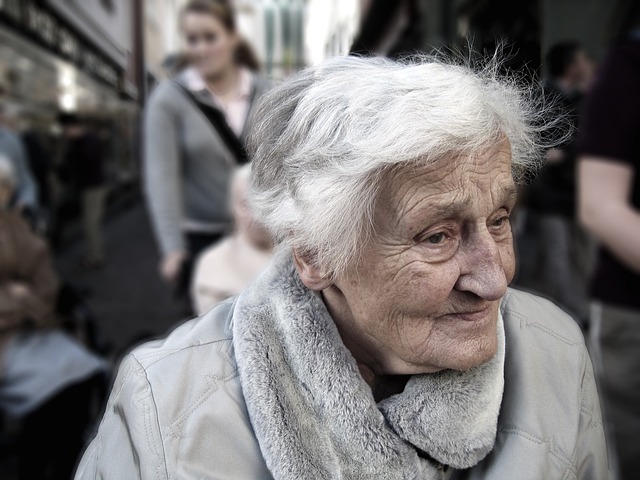In today’s fast-paced world, the practice of mindfulness has gained significant attention as a powerful tool for promoting healthy aging. Mindfulness involves being fully present in the moment, cultivating self-awareness, and embracing a non-judgmental attitude. In this article, we explore the profound connection between mindfulness and healthy aging, shedding light on the benefits it offers and how individuals can incorporate mindfulness practices into their lives. By fostering a deeper understanding of mindfulness and its impact on cognitive, emotional, and physical well-being, we can unlock the secrets to aging gracefully and maintaining a high quality of life.
The Essence of Mindfulness
Mindfulness is the practice of intentionally paying attention to the present moment with curiosity and acceptance. It involves observing one’s thoughts, emotions, bodily sensations, and the surrounding environment without judgment. By cultivating mindfulness, individuals develop a heightened sense of self-awareness, enabling them to fully engage in their experiences and build resilience in the face of challenges. Mindfulness encourages a shift from autopilot living to a more conscious and intentional way of being.
The Role of Mindfulness in Healthy Aging
Scientific research has revealed the profound impact of mindfulness on healthy aging across various domains of well-being. Let’s explore the key areas where mindfulness can make a difference:
- Cognitive Health: Mindfulness practices have been shown to enhance cognitive functions, such as attention, memory, and executive function. By training the mind to focus and reduce distraction, mindfulness helps older adults maintain cognitive sharpness and prevent age-related decline.
- Emotional Well-being: Aging can bring emotional challenges, including increased stress, anxiety, and depression. Mindfulness-based interventions have demonstrated effectiveness in reducing these symptoms and promoting emotional resilience. By cultivating present-moment awareness, individuals can better regulate their emotions and experience greater well-being.
- Physical Health: Mindfulness practices have been linked to numerous physical health benefits. Regular mindfulness practice has been associated with reduced blood pressure, improved sleep quality, enhanced immune function, and reduced inflammation. These factors contribute to better overall physical health and promote healthy aging.
Practical Strategies for Incorporating Mindfulness
Embracing mindfulness as a daily practice can greatly enhance healthy aging. Here are practical strategies to incorporate mindfulness into your routine:
- Meditation: Set aside dedicated time for meditation. Focus on your breath, body sensations, or use guided meditation. Start with a few minutes a day and gradually increase the duration.
- Mindful Movement: Engage in activities like yoga, tai chi, or walking meditation. These practices combine movement with mindfulness, promoting physical well-being and mental clarity.
- Mindful Eating: Pay attention to your food choices and eating experience. Slow down, savor each bite, and notice the flavors, textures, and nourishment your food provides.
- Daily Mindfulness Check-Ins: Take brief pauses throughout the day to reconnect with the present moment. Notice your thoughts, emotions, and sensations without judgment.
- Gratitude Practice: Cultivate gratitude by reflecting on things you appreciate. This practice shifts your focus to the positive aspects of life, promoting overall well-being.
The Journey of Healthy Aging with Mindfulness
The journey of healthy aging is a dynamic process that encompasses physical, cognitive, emotional, and social well-being. Mindfulness serves as a valuable companion throughout this journey, providing tools and perspectives to navigate the challenges and embrace the opportunities that come with aging.
- Embracing Change: As we age, our bodies and minds undergo various transformations. Mindfulness encourages acceptance of these changes by fostering a non-judgmental attitude. Rather than resisting or lamenting the inevitable shifts, mindfulness allows us to meet them with grace and self-compassion. By cultivating present-moment awareness, we can let go of attachment to the past and cultivate a sense of peace with the ever-changing nature of life.
- Cultivating Resilience: Mindfulness practices enhance our ability to adapt and bounce back in the face of adversity. As we age, we may encounter physical limitations, health challenges, or the loss of loved ones. Mindfulness teaches us to meet these challenges with resilience and equanimity. By observing our thoughts and emotions with curiosity and non-attachment, we can develop a greater sense of inner strength and emotional well-being.
- Fostering Meaning and Purpose: Aging provides an opportunity for deeper introspection and a reevaluation of what truly matters to us. Mindfulness helps us connect with our core values, passions, and aspirations. By bringing mindful awareness to our daily activities, we can infuse them with a sense of purpose and meaning. This might involve engaging in activities that align with our values, contributing to our communities, or exploring new hobbies that bring us joy and fulfillment.
- Enhancing Social Connection: Maintaining strong social connections is crucial for healthy aging. Mindfulness can enrich our relationships by fostering deep listening, empathy, and compassion. By being fully present with others, we can cultivate genuine connections and nurture meaningful relationships. Mindful communication allows us to truly understand and support others, enhancing our social well-being and overall quality of life.
- Cultivating Gratitude and Joy: Mindfulness encourages us to appreciate the present moment and cultivate gratitude for the blessings in our lives. As we age, it becomes even more important to focus on the positive aspects and find joy in the small moments. By regularly practicing gratitude and savoring the simple pleasures, we can shift our mindset to one of abundance and contentment, enhancing our overall well-being.
- Continual Growth and Learning: Mindfulness invites us to approach life with a beginner’s mind, embracing a sense of curiosity and openness. It encourages us to engage in lifelong learning and personal growth. As we age, we can explore new interests, engage in intellectual pursuits, or take up creative endeavors. Mindfulness supports us in stepping out of our comfort zones and embracing new experiences, fostering a sense of vitality and continued self-development.
The journey of healthy aging is an ongoing process that can be enriched by the practice of mindfulness.
Conclusion
Mindfulness is a powerful practice that promotes healthy aging by fostering self-awareness, reducing stress, and enhancing overall well-being. By embracing mindfulness, individuals can cultivate cognitive vitality, emotional resilience, and physical well-being throughout the aging process.
As research continues to uncover the benefits of mindfulness on healthy aging, it is clear that practicing mindfulness is a valuable investment in our well-being. By embracing the present moment and incorporating mindfulness techniques into our lives, we can unlock the transformative potential of mindfulness, leading to a more fulfilling and vibrant journey of healthy aging.
Image by Gerd Altmann from Pixabay
Meditation and Mindfulness
-

What is Mindful Movement and How to Incorporate It into Your Physical Exercise
Physical exercise is not only beneficial for our physical health but also plays a crucial role in promoting mental well-being. By integrating mindfulness into our physical activities, we can elevate our exercise routines from mere physical exertion to a holistic practice that nurtures both the body and the mind. This article explores the concept of…
-

How to Integrate Mindfulness With the Art of Self-Compassion for Inner Well-Being
-

How to Use Mindfulness for Effective Anger Management
-

Cultivate Workplace Mindfulness: Practical Strategies and Benefits
-

Sleep Meditation: How to Meditate in Bed and Fall Asleep Peacefully
-

How to choose between Meditation and Mindfulness – What’s Best for You
-

The Ultimate Guide to Loving-Kindness Meditation: Cultivating Compassion for Inner Growth









Leave a Reply